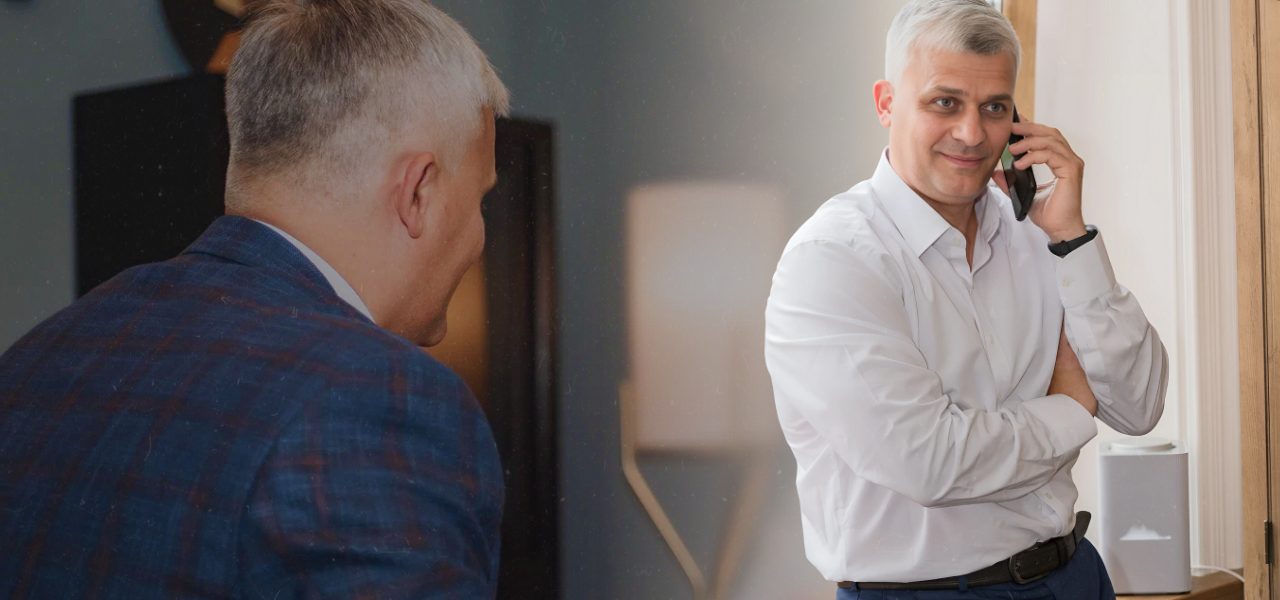Interview: Coping with Vision Loss in Adulthood — Insights from Mikhail Shchurov

Hello again, Mikhail! What emotional reactions do adults usually experience when they lose their vision?
I once worked with a client who lost her sight at the age of 36 due to a rare genetic syndrome. She was a successful, intelligent woman with a solid career and a loving family. One day, she realized that her vision was rapidly deteriorating. The first thing she faced was despair — a deep fear: “What happens now? Can I keep living like I used to?” Although she had a supportive husband and family, she still felt alone — as if everything stable in her life was collapsing. Even simple tasks became overwhelming. She told me that just taking her child to kindergarten, only two blocks away, turned into a frightening and exhausting challenge.
It’s so important not to suppress or run from those feelings. People need to be allowed — and supported — to fully feel them. That’s when both professional and personal support becomes vital. In her case, her husband didn’t leave, her family stayed close. Even though she hadn’t lost her sight completely — she could still distinguish light and darkness — it was still a psychological shock.
Do those emotions change over time?
They do. With time, people move toward acceptance. I recently led a session at a center for blind individuals, and it was a vibrant, joyful group. People were laughing, joking, and talking — fully engaged with each other. But getting there is a process. In my experience, adaptation may take from several months up to two years. People have to relearn how to function — how to move around safely, navigate their homes, take care of themselves. Children develop these skills from birth, but adults have to rebuild everything. It’s a stressful transformation.
What stages of emotional adjustment do you usually observe?
They’re similar to the stages of grief: denial, anger, bargaining, depression, and acceptance. But they don’t always follow that order. They can overlap. Someone might be angry for a long time or jump straight into bargaining — “If I do everything right, maybe my sight will come back.” These are completely normal responses to a traumatic change.
How can you tell if someone is stuck in one of these stages?
It’s usually clear. They repeat the same thoughts, don’t move forward, lose initiative. It’s what we call rumination — constantly cycling through the problem without resolution. It’s as if they’re caught in a loop, repeating the same thoughts without moving forward. That’s when someone needs a nudge, a way to see their situation differently — through the eyes of a therapist or a trusted person.
Is the reaction different depending on age?
Absolutely. Younger people adapt more easily. Their minds are more flexible, and they’re quicker to learn new ways of doing things. That same woman I mentioned — after losing most of her vision, she started playing table tennis for blind players and even won an award! Older individuals often find adaptation more challenging, as habits and routines are more deeply ingrained. The same applies to therapy — the younger the client, the faster the progress.
What’s the difference between gradual and sudden vision loss?
Gradual loss gives people time to prepare. They go through medical exams, get a diagnosis, have a chance to talk to loved ones, process the emotions in stages. Sudden loss — say, from an injury — can cause immediate shock. That shock can lead to reactive depression or, on the other end, frantic, erratic behavior. Both are defensive responses to overwhelming pain.
How do family relationships affect adjustment?
Losing your vision makes you dependent in some ways. Psychologically, people often regress — they feel like children again. This creates a huge burden on family members. I often see not just clients but their partners and relatives in therapy. They feel exhausted, angry, guilty — and that’s okay. Those emotions are valid. What matters is finding ways to support their loved one without losing themselves.
What kinds of support tend to be most helpful?
Practical help at home, group therapy, community involvement — all of these. The most important thing is not to isolate. I work with people through the All-Russian Society of the Blind (VOS), a non-profit that organizes activities such as painting, sports, and travel. They don’t just survive — they thrive. It’s inspiring.
What if someone still feels unsupported?
Then it’s important to examine whether support is truly lacking or if that feeling comes from within. Sometimes people are surrounded by help but still feel empty — that could be depression. In such cases, we focus on internal resources. And sometimes, it’s about accepting that life has changed. That’s okay.
What fears are common among people losing their vision?
There’s a whole range: fear of rejection, of loneliness, of death. People become more prone to injury — crossing the street becomes dangerous. If you don’t feel safe, anxiety sets in and can be incredibly draining.
And how do these fears affect daily life?
They sap your energy. You’re constantly in survival mode, not growth mode. Many people feel completely depleted. They need both emotional and practical support.
What techniques help people adapt to vision loss?
Many things help — body-based therapies like authentic movement, creative practices like art and games. The key is a safe environment where someone can be themselves, move freely, talk, connect. That reduces anxiety and builds confidence.
What happens to self-esteem?
It usually drops. People feel vulnerable, “less than.” Rebuilding self-worth takes time and a lot of support. And family plays a huge role.
What psychological barriers make social integration difficult?
Limiting beliefs — “I’m alone,” “I can’t do this,” “my life is over.” These beliefs aren’t true, but they feel real. Fortunately, with the right support, people often move past them.
Can people work through this on their own?
It requires reflection. Asking, “What if things aren’t how I think they are? What if there’s another way?” But early on, people aren’t ready. They’re still grieving. At that stage, they just need to be held and heard.
Are support groups helpful?
Absolutely — both therapeutic and informal ones. The format doesn’t matter as much as finding the right fit. Some people love expressive art, others just need conversation. It’s all about what works for the individual.
Are there technologies that help?
Digital tools — from adaptive software to online courses — open opportunities for learning, socializing, and professional development. They help people feel capable again.
How common is depression or anxiety in this context?
Quite common. Given everything happening in the world — the pandemic, economic stress, global conflicts — anxiety levels are high for everyone. For people losing their vision, it’s even more intense.
How do you help people stay motivated?
I use coaching techniques. We build a future vision — what kind of life they want. We imagine their routine, what brings them joy, how they feel. When they connect emotionally with that future, motivation follows. We also explore core values: love, connection, freedom, joy. Values give us strength.
And what helps you support others more effectively?
Honestly, it’s a mix of empathy and professional curiosity. When I see someone go from despair to thriving, it reminds me why I do this work. It’s incredibly rewarding.
Do you have a story of success that stands out?
Yes — the project “All the Colors of the World Except Black” brings together blind and visually impaired people to create art and organize exhibitions. Many had never picked up a brush before. Now, they have exhibitions. Visitors don’t realize the artists are blind — and they’re amazed. That kind of recognition gives participants a huge boost in confidence. It’s a powerful reminder of what’s possible.
